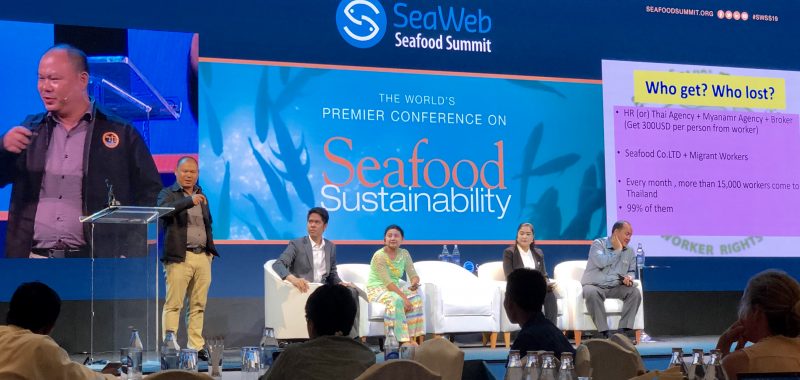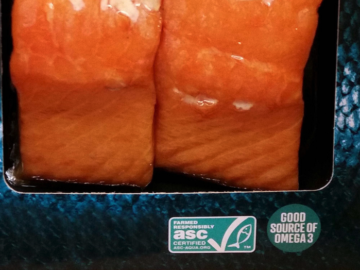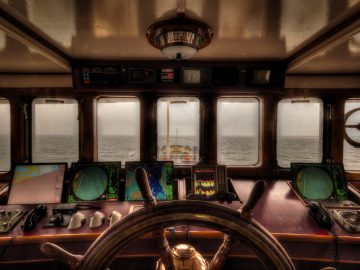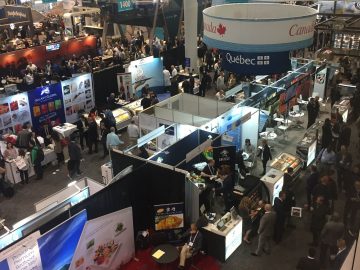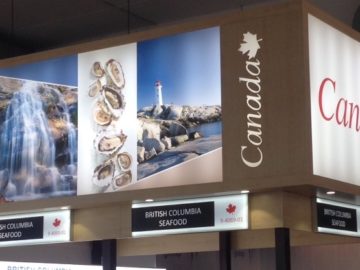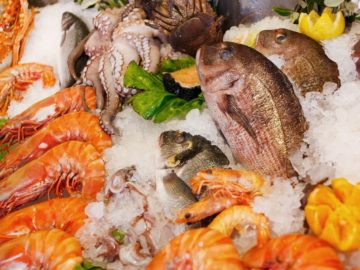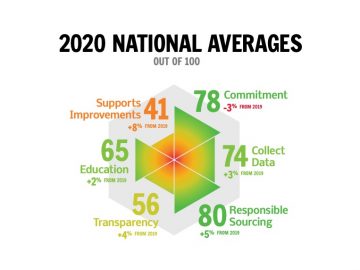SeaChoice reports on hot topics at the 2019 SeaWeb Summit in Bangkok, Thailand
Last month, an increasingly diverse group of seafood sustainability professionals from all over the world gathered in Bangkok for the 2019 SeaWeb Seafood Summit. In addition to representatives from environmental organizations, there were seafood buyers for large businesses, corporate social responsibility specialists, human rights advocates, traceability experts, funders and academics.
What was notable, in comparison to past Summits, was the increasing focus on social responsibility. This is not because seafood’s environmental issues have all been addressed, but due to a growing acknowledgement that environmental sustainability and social responsibility need to be tackled at the same time. Likewise, the third pillar of sustainability – economics – needs to be able to support both objectives, as well as seafood businesses’ bottom lines.
The need for all three aspects of sustainability to be improving at the same time was well illustrated by the opening keynote from Paul Rice, the Founder and CEO of Fair Trade USA. Rice first realized that “markets can be the most powerful driver of change” after he saw the dependency on foreign aid that was created by large-scale international development projects. In Nicaragua, Rice started working with a coffee farmer cooperative that sold their product with a price premium that went back to the producers. Fast forward a couple decades, and Fair Trade USA has 1,400 partner companies, 1.6 million farmers and workers, and $610 million financial impact (the premiums that have been generated). Fair Trade has also begun certifying fisheries, while aquaculture farms are in the works.
Rice also cited research showing that consumers, especially young ones, are hungry to reward companies supplying products that support their values. Many mainstream businesses are now realizing that sustainability and profitability go hand in hand. This should be fairly obvious with seafood – if there are no fish, there is no seafood to sell – and in many countries seafood businesses have made commitments to supporting sustainable practices. In Canada, consumers can use Seafood Progress to see what commitments their retailer has made and how it is performing against them. SeaChoice just released the results from our second year of assessment, so you can also see whether retailers are doing better or worse compared to last year.
The Summit’s Thailand location was a very appropriate place for social responsibility conversations. When it comes to seafood, Thailand has been in the news for all the wrong reasons. Investigations into Thai-flagged fishing vessels and Thai seafood processing plants found evidence of widespread human rights abuses, including forced labour, trafficking, and in some cases, murder. The delegates heard from fishermen who had experienced these horrors firsthand, being recruited from neighbouring Myanmar or Cambodia under false pretenses and only managing to escape after several years of forced labour. And this isn’t just a problem with Thai vessels and Thai factories; a recent U.S. Department of State report of Trafficking in Persons found widespread forced labour in seafood-related work in 47 countries. Recently, the Thai government and leading seafood businesses like Thai Union have taken steps to start to address these issues, but the risks are still very real for vulnerable people around the world.
Fortunately, in addition to hearing about what can go wrong (for example from the Migrant Workers Rights Network, feature image, among many others), delegates also heard about what can go right. For example, human rights organizations are collaborating with seafood businesses to identify risks in their supply chain and make changes to address them. Collaborations between seafood NGOs and human rights NGOs are also resulting in new tools for businesses to help them with this due diligence, such as the Roadmap for Improving Seafood Ethics (RISE). The Global Sustainable Seafood Initiative (GSSI), which assesses and benchmarks existing seafood certification schemes against Food and Agricultural Organization (FAO) guidelines, announced that they are working with the Consumer Goods Forum Sustainable Supply Chain Initiative to start benchmarking social compliance audit and certification schemes.
In fact, many of the presentations talked about seafood certifications and promoted their role in verifying to consumers that a company is procuring sustainably and responsibly. However, certifications are not without their challenges. One of the main challenges discussed was that the burden associated with improvements and/or certification typically lies with the producers, while the benefits from certification accrue to companies further up the supply chain. There needs to be a more equitable distribution of the costs and benefits of certification programs if they are going to be long lasting and resilient. Another challenge discussed was the huge amount of seafood yet to be certified or ranked. Globally, nearly two-thirds (126.8 million MT) of seafood falls under this sustainability ‘unknown’ category.
One challenge that was noticeably absent from discussions on certifications at the Summit was the gap that can occur between what eco-certifications promise and what they actually deliver. Companies and consumers expect eco-certifications to be robust and have stringent standards in place. While a number of certifications benchmark to GSSI and/or are ISEAL members to demonstrate that they have robust processes and stringent standards in place – neither GSSI nor ISEAL assess the decisions made by the certification scheme under their process frameworks or the sustainability rigor of their standards. This is where stakeholders can play an important role in holding certifications accountable to their promises. SeaChoice, for example, has been engaging in multiple ways with eco-certifications to make sure that the programs remain credible and are leading real change on the water to reduce the environmental impact of fishing and aquaculture.
The complexity and inter-related nature of these issues, the fact that they combine environmental and social challenges with economics and market drivers, goes a long way towards explaining another hot topic at this year’s Summit – collaboration. No one organization has the expertise or relationships (or funding!) to address all three pillars by itself, so collaboration and partnership will be increasingly important to produce truly sustainable seafood at the global level.
